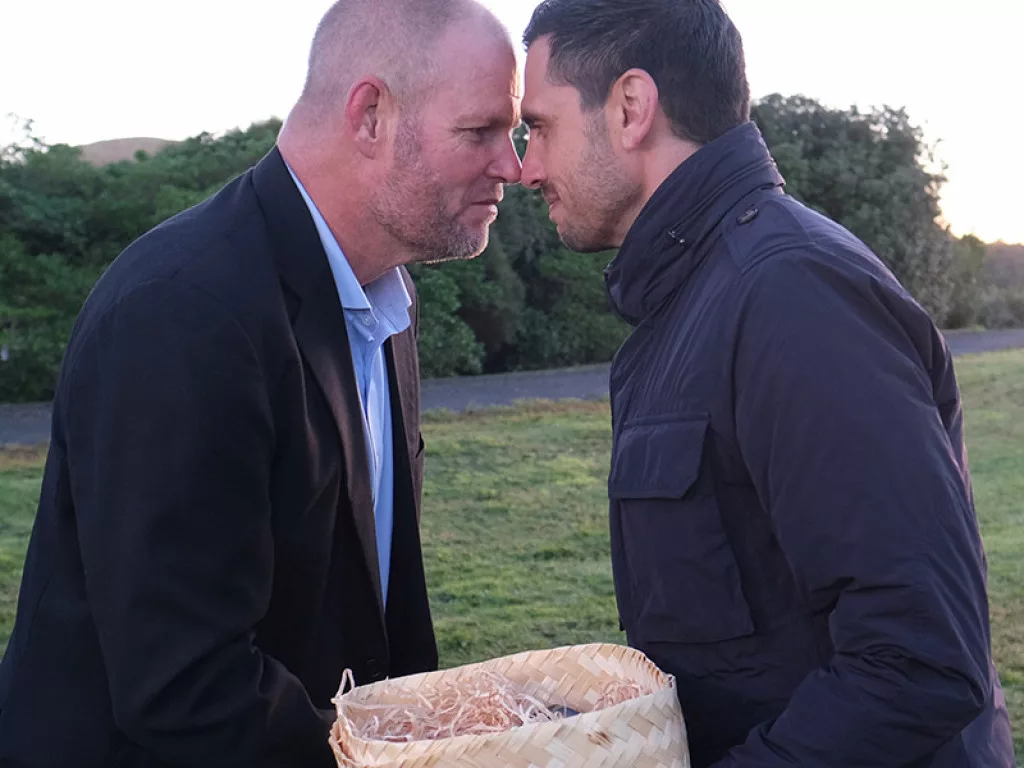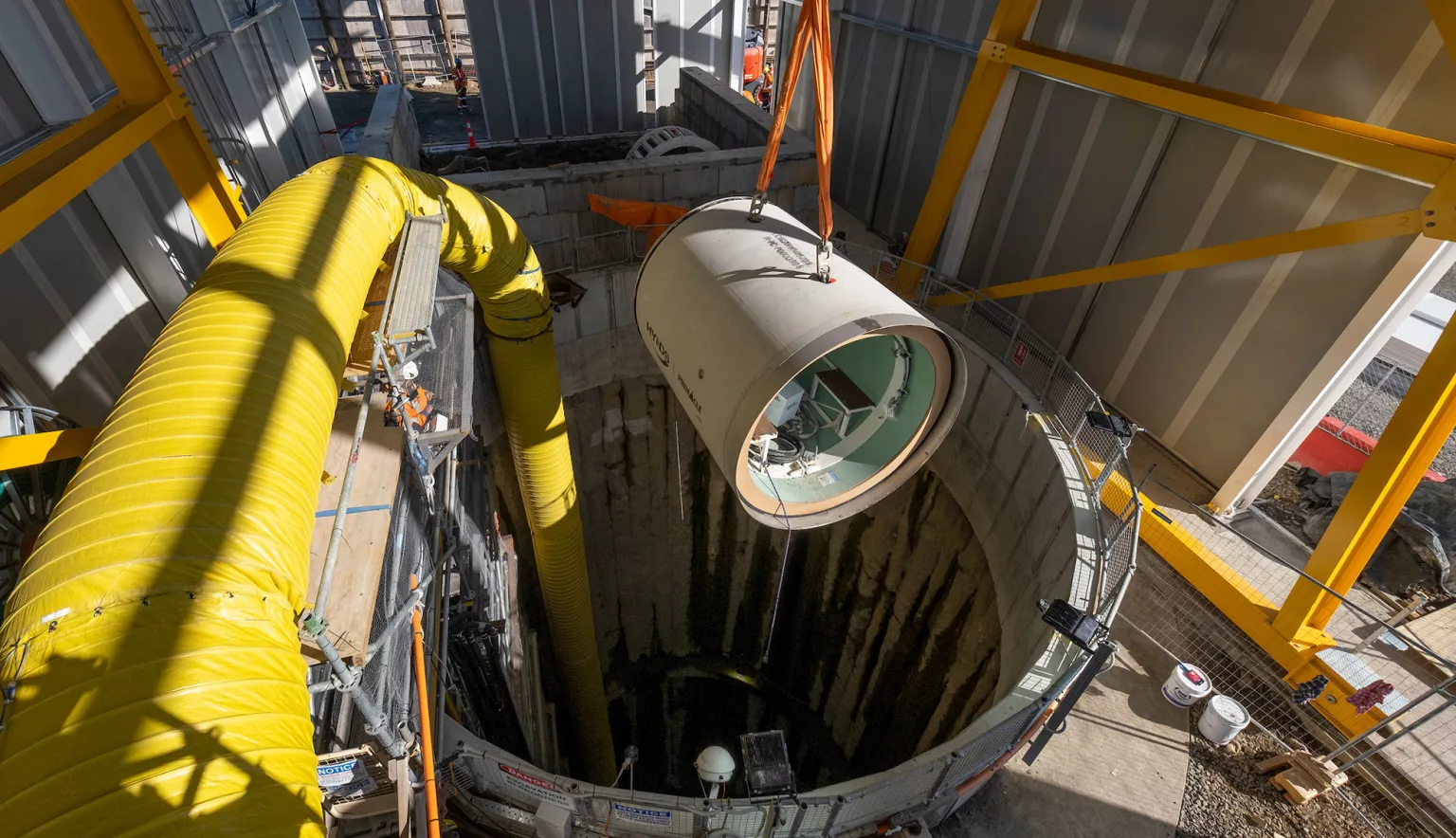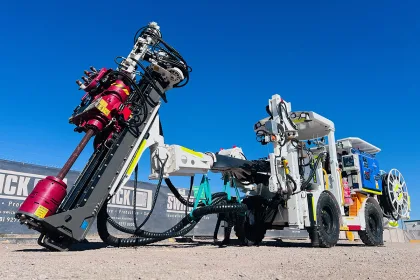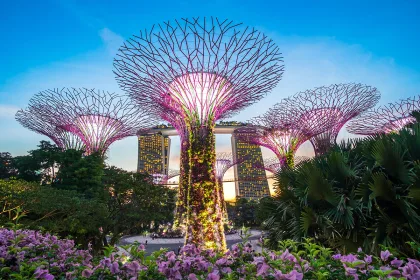The Ghella Abergeldie Joint Venture represents a trailblazing union to deliver New Zealand’s largest wastewater infrastructure project. We go behind the scenes with Project Director, Francesco Saibene.
TUNNELLING THE WAY FORWARD FOR AUCKLAND
The end of 2021 brought a breakthrough moment for the ongoing work of the Ghella-Abergeldie Joint Venture (GAJV) with the micro-Tunnel Boring Machine (mTBM) ‘Domenica’ finishing her first drive. It is the result of two years’ hard work.
This is just one step forward in the long journey of delivering the Central Interceptor Wastewater tunnel –New Zealand’s largest wastewater treatment infrastructure project.
This six-year project is led by two titans of industry who have unified to undertake this momentous tender, awarded by New Zealand’s largest water utility – Watercare.
STRENGTH IN PARTNERSHIP
The Ghella-Abergeldie Joint Venture comprises the union of internationally renowned Italian construction and tunnelling specialist Ghella, with Abergeldie – one of Australia and New Zealand’s leading complex infrastructure providers.
Saibene himself has over 30 years of tunnelling expertise on New Zealand soil, which is further strengthened by Ghella’s 150 years of Italian and international experience and capabilities.
Founded in 1894, Ghella is an established provider of underground works, particularly with the use of TBMs. The company boasts an impressive range of major projects including the Riachuelo sewage system in Buenos Aires, and the Sydney and Brisbane Metros in Australia.
Meanwhile, Abergeldie has over 25 years’ experience in complex underground projects particularly focused on water related projects.
These collective strengths equip GAJV with the extensive experience to undertake wastewater projects of significant scale.
Presiding over this ambitious venture is Project Director, Francesco Saibene, the New Zealand representative for Ghella.
“The project is being delivered by Ghella Abergeldie Joint Venture. GAJV combines the tunnelling experience and legacy from Ghella with the local knowledge from Abergeldie,” Saibene tells us.
Aside from the proven technical prowess required to successfully achieve such an undertaking, both partners endorse a close-knit working ethos centred on creating a community of working that only strengthens their union.
“The JV Partners are both family-owned and the family environment is tangible in the joint venture,” he adds. “Through this, we were able not only to create a different work environment but also to create a great relationship with our client, Watercare, and all the stakeholders involved in the project.
“This has also driven the project to strive on creating a legacy of social and broader outcomes.”
This familial bond has been the glue to hold things together and boost morale during the turbulence and disruption of the COVID-19 pandemic, which has greatly impacted progress due to limited product availability and delayed delivery times throughout the supply chain.

“Both partners are family owned and the family environment is tangible in the Joint Venture”
Francesco Saibene, Project Director, GAJV
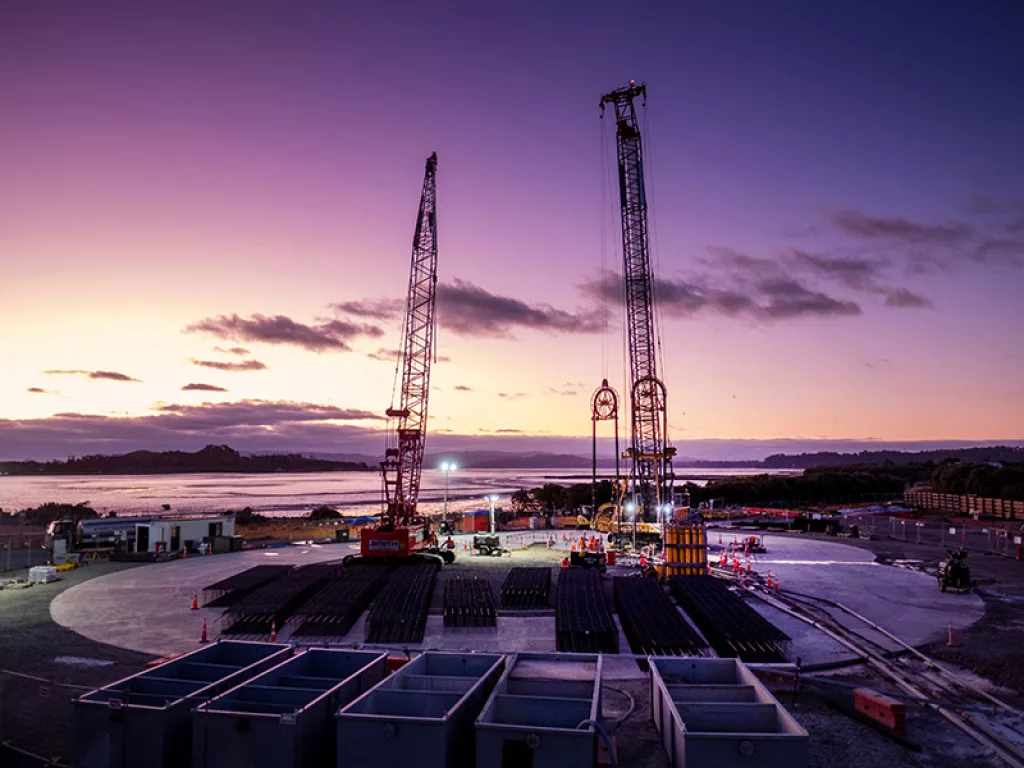
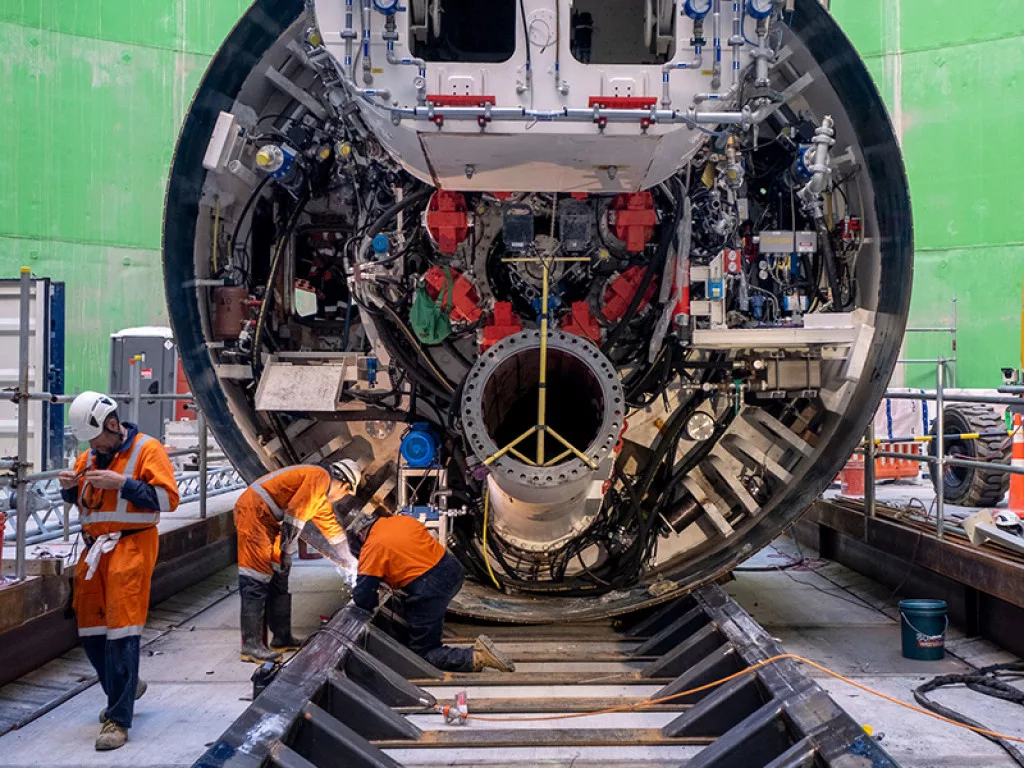
THE WATERCARE CENTRAL INTERCEPTOR
The Central Interceptor Wastewater Tunnel is set to be the lifeblood of future Auckland. Indeed, it is this concern to conserve the welfare and wellbeing of Auckland’s residents with improved wastewater services for the century to come that guides the entire operation.
“The Central Interceptor (CI) tunnel is the largest wastewater infrastructure project in New Zealand and the most significant wastewater investment in Watercare’s history.
“For years, when it rains heavily, stormwater has combined with wastewater and overwhelmed the network, overflowing into local creeks and streams. The CI Project will cater for the population growth of Auckland with its 14.7-kilometre (km) tunnel running from Māngere to Grey Lynn. This infrastructure has been designed to have a life of 100 years,” explains Saibene.
By constructing this underground infrastructure, the health of Auckland’s waterways will improve by reducing overflows in wet-weather conditions. Not only this, but the construction supports the community by creating significant employment opportunities for the city.
Due for completion in 2026 the 14.7km tunnel consists of a 4.5 metre (m) wide tunnel, at depths of between 150m and 110m. The CI will collect wastewater from the existing network and convey it at 7.2 cubic metres per second (m3/s) capacity pump station.
“Other key components include a 1.1km-long sewer at 2.4m ID and a 3.3km-long sewer at 2.1m ID, both pipe-jacked.
“18 drop shafts, mostly of the cascade type, drop flow from shallow connections to the deep link sewers and main tunnel. Inflows to the tunnel are controlled via actuated gates at most of the shallow connections to the existing network. At its downstream end, the tunnel invert is at 32m depth as it enters the pump station,” outlines Saibene.
With tunnelling forming the main component of the work, GAJV is utilising an Earth Pressure Balance (EPB) TBM with precast concrete segmental lining for the construction of the main tunnel.
This EPB TBM technology boasts several defining characteristics, including a nine-bar maximum operating pressure that caters to hydrostatic pressures of up to 8.7-bar under the high cover section of the alignment.
The TBM thrust system provides an emergency propulsion capacity of up to 48,000 kilonewtons (kN), and an airlock maximum operating pressure of five-bar to facilitate hyperbaric cutterhead interventions.
In order to cater for the maximum operating pressure, the TBM was required to have either two screws, or a single screw plus supplementary means to manage the maximum pressure down to routine dynamic operating pressures.
“Due to the corrosive sewer environment, specific focus has been given to the protection of the structure most exposed to the risk of corrosion.
“The tunnels will be lined with a High-Density Polyethylene (HDPE) layer, including the main shaft at the receiving shaft in the Pump Station, and some of the shafts will be manufactured in FRP (Fibre-reinforced plastic). The shaft at the May Road site will be one of the biggest in size and depth ever done in the world,” states Saibene.
“GAJV is committed to leaving a lasting legacy for the people of Auckland”
Francesco Saibene, Project Director, GAJV
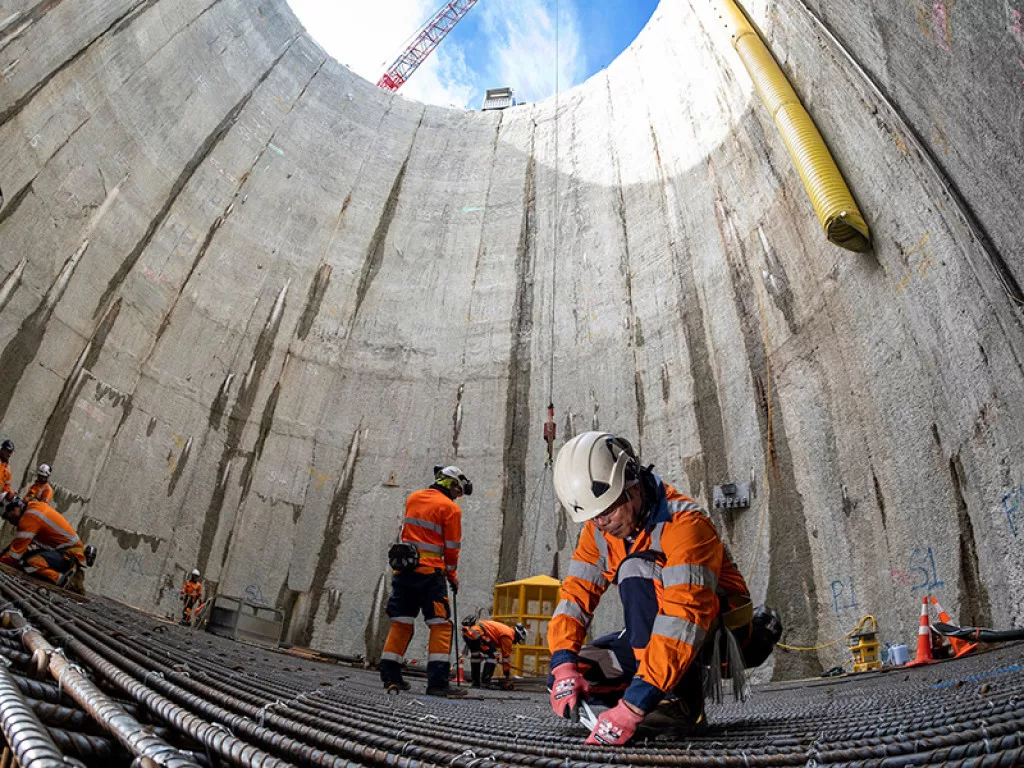
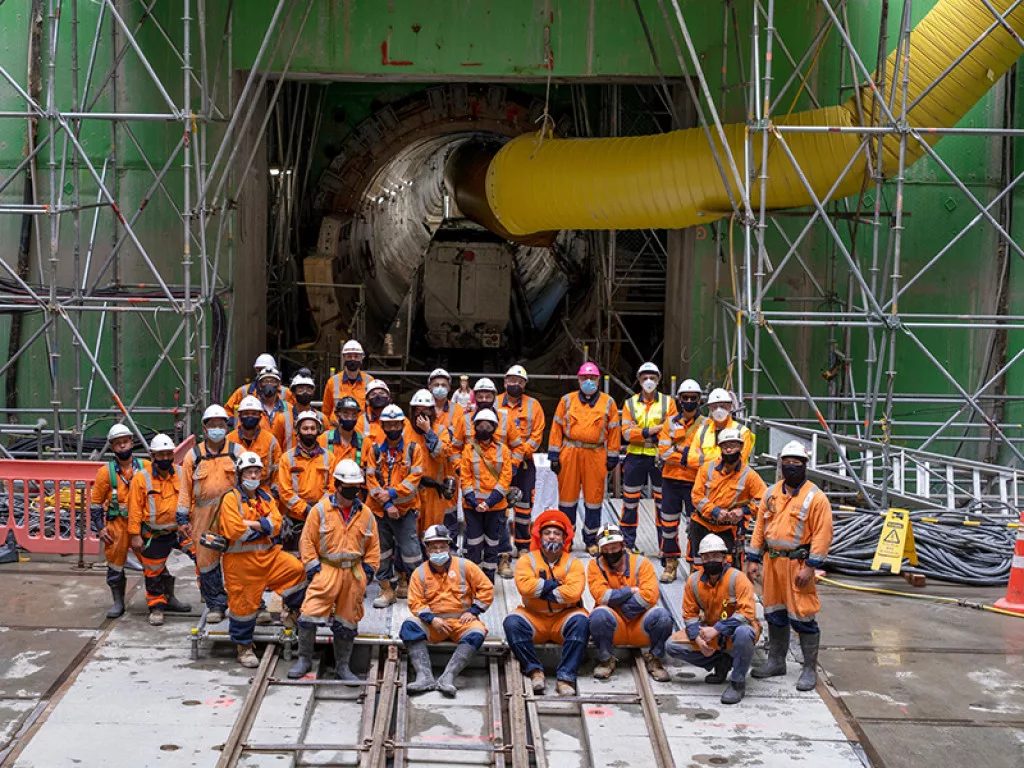
COMMUNITY-CONSCIOUS
The focus on family extends to the way GAJV works in the community.
As a major undertaking in the area, GAJV is keen to engage with the community wherever possible, and is proud of these commitments as a means to increase stakeholder engagement.
“Stakeholder engagement focusses on the communities near our sites and includes a school engagement programme. We also focus strongly on GAJV staff with a literacy and numeracy programme, mental wellbeing support and affordable nutritious meals,” Saibene tells us.
The entire GAJV operation on the CI project consists of 16 construction sites throughout Auckland, with numerous stakeholders, community groups, businesses and schools affected by the work.
“GAJV is committed to leaving a lasting legacy in Auckland communities supporting social enterprise, summer internships, school engagement and several other projects with a strong local focus.
“This includes creating a laundry service in partnership with a local marae to wash our personal protective equipment (PPE) so that we reduce the risk of potentially harmful substances entering our homes,” he adds.
GAJV also seeks to support the local cultural landscape by contributing to the rehabilitation of the Maori heritage area, Puketutu Island. This is done by reusing spoil from the GAJV shafts.
“This work restores a place of strong cultural significance and returning it to Tangata Whenua,” Saibene states proudly.
This social responsibility also translates to matters concerning environmental sustainability and has been a factor embedded in the project since the initial design stage as a major focus for client, Watercare.
“A focus on sustainability has been imperative since the project first began,” he affirms. “With advances in technology and practice we continue to find further opportunities to mitigate our environmental impact. Having a dedicated sustainability focus on the project means a view across every aspect from procurement to packaging returns and the ability to make those areas join up.”
GAJV has adopted the Infrastructure Sustainability Council (ISC) framework to guide its efforts in this area, providing its clients with a transparent standard to compare the CI’s sustainability performance against other such projects.
“A couple of our main achievements include the utilisation of electric locomotives for the tunnel operations, the use of electric trucks for spoil cartage on some of the sites, and the removal of one of the temporary shafts, thanks to the elongation of one of the pipe-jacked tunnel drives. This resulted in the longest single drive in New Zealand with an EPB machine,” concludes Saibene.
Delivering a series of industry-firsts for New Zealand, GAJV promises to leave a positive impact for the people of Auckland through the delivery of a healthier water system to supply the community for years to come. We leave Saibene, and GAJV, on the cusp of another year of progress.
